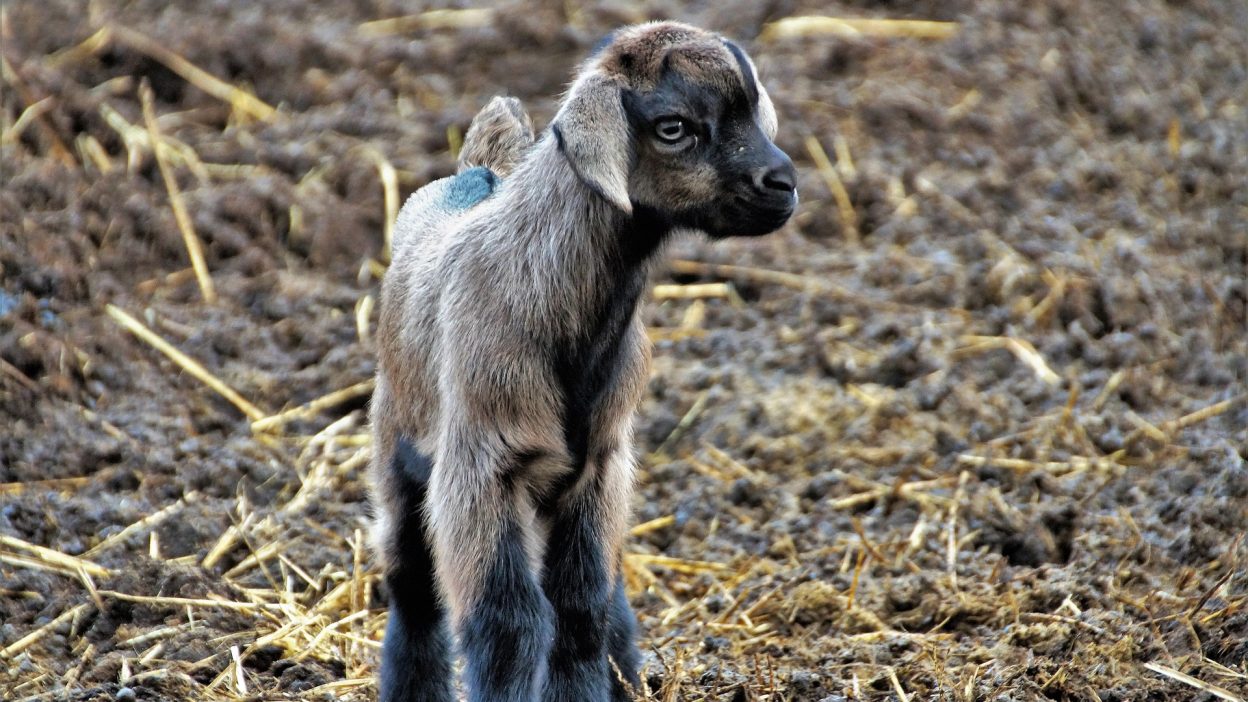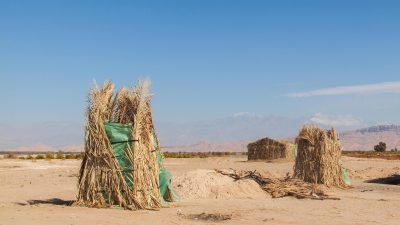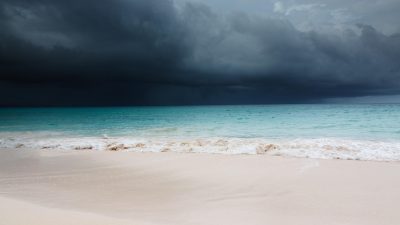The Night Lake Monoun Turned into a Silent Killer
1. A Peaceful Lake Turns into a Death Trap
On 15 August 1984, the tranquil waters of Lake Monoun, located in the West Province of Cameroon, transformed into a force of death. In the dead of night, without any prior warning, a massive cloud of carbon dioxide (CO₂) erupted from the lake’s depths, sweeping across the surrounding landscape. Within minutes, 37 people suffocated, along with countless livestock, in an event that left scientists and authorities stunned.
This disaster was not an earthquake, nor a volcanic eruption, nor a storm. There was no explosion, no visible flames, no destruction of homes—just an invisible force that suffocated its victims without mercy. The people who inhaled the gas didn’t even have a chance to fight for their lives. It was as if an unseen executioner had passed through the land, leaving death in its wake.
At the time, no one understood what had happened. People spoke of curses, spirits, or even government conspiracies, but the real culprit lay deep beneath the lake’s surface—a phenomenon so rare that it had never been recorded before. It would take scientists years to uncover the truth about limnic eruptions, a silent but devastating natural disaster.
2. A Normal Evening Turns into an Unimaginable Nightmare
For the residents of Njindoum village, located near Lake Monoun, the evening of 15 August 1984 began like any other. The air was calm, the village was quiet, and no one suspected that death was lurking nearby.
Suddenly, a loud rumbling sound was heard from the direction of the lake. Some villagers described it as the sound of distant thunder, while others compared it to an earthquake shaking the ground beneath them. Moments later, a thick, white mist rose from the lake, spreading rapidly over the land like an unstoppable force.
Those caught outside had no idea they were inhaling pure CO₂, a gas that is colourless, odourless, and lethal in high concentrations. The cloud displaced oxygen, suffocating everyone in its path.
People collapsed where they stood.
- Some slumped to the ground mid-step, as if their bodies had simply given up.
- Motorbike riders veered off the roads and crashed, unable to control their vehicles.
- Those who tried to run away were overtaken by the gas and fell unconscious within seconds.
There was no visible sign of an attack, no destruction of buildings, no fire. The silent nature of the disaster made it even more terrifying—victims dropped dead before they could even comprehend what was happening.
Survivors who were indoors or at higher ground escaped death, but they emerged the next morning to a horrifying sight—lifeless bodies scattered throughout the village, animals lying dead, and an eerie silence hanging over the land.
3. The Devastating Toll: Who Were the Victims of Lake Monoun?
The official death toll was 37, but there are strong reasons to believe the actual number could have been higher.
- Some bodies may never have been found
The gas spread over a large area, and some victims in remote locations may have never been recovered or counted. - Instant death meant no chance of survival
Unlike other disasters where people might have suffered injuries before dying, the victims of Monoun died instantly due to asphyxiation. - Animals perished alongside humans
Not only did people suffocate, but entire herds of cattle, goats, and other animals collapsed in the fields, leading to huge economic losses for local farmers.
Survivors who witnessed the aftermath described it as surreal. Many had lost friends, family members, and neighbours in a single night, their bodies left untouched by fire or destruction, yet lifeless as if they had simply fallen asleep and never woken up.
4. Could the Lake Monoun Disaster Have Been Prevented?
At the time of the disaster, scientists had never encountered anything like a limnic eruption before. However, in hindsight, there were warning signs that went unnoticed.
Signs of Danger That Were Ignored
- Reports of bubbles and disturbances
Some villagers had reported seeing strange bubbles rising from the lake’s surface in the months before the disaster. These were early signs of CO₂ escaping, but no one realised their significance. - No scientific research on lake gases
Cameroon did not have a monitoring system in place to study gases trapped in deep lakes. Had such studies been conducted earlier, experts might have noticed the dangerous build-up of CO₂. - No evacuation plans or warnings
Even if the lake had been recognised as a potential hazard, no safety measures or emergency protocols existed to protect the local population.
It wasn’t until the far deadlier Lake Nyos disaster in 1986 that authorities took action to study and prevent future limnic eruptions.
5. Science or Cover-Up? The Theories Surrounding the Disaster
While scientists eventually determined that a limnic eruption caused the disaster, the lack of immediate answers led to widespread speculation and fear.
Popular Theories That Emerged
- Government Experiment Gone Wrong?
Some locals believed that a military or industrial accident released a toxic chemical, but authorities denied any such activity near the lake. - Supernatural Punishment?
Many villagers turned to folklore, believing that angry spirits or ancestors had unleashed a deadly curse on the land. - Was the True Death Toll Hidden?
There were claims that the actual number of victims was much higher than 37, but authorities downplayed it to prevent panic.
Regardless of these theories, the truth was ultimately uncovered—nature itself had created a silent killer, waiting for the right conditions to strike.
6. The Science Behind Limnic Eruptions: A Rare but Deadly Phenomenon
Lake Monoun was the first recorded case of a limnic eruption, but what exactly caused it?
How It Happened
- Over centuries, carbon dioxide built up at the lake’s bottom, trapped by pressure.
- A sudden trigger—possibly an earthquake, a landslide, or heavy rainfall—caused the gas to shoot up to the surface in an explosive release.
- The gas cloud rolled across the land, suffocating everything in its path.
Limnic eruptions are extremely rare, but their effects are catastrophic when they occur.
7. The Human Cost: The Emotional and Economic Aftermath
- Families lost multiple members overnight
Some households were completely wiped out, leaving entire families erased from history. - Panic gripped the community
Survivors feared another eruption, and many people abandoned their homes permanently. - Farms were devastated
With cattle, goats, and poultry dying alongside humans, many villagers lost their main source of livelihood.
8. 1986: Lake Nyos Proved That the World Hadn’t Learned
Just two years after the Lake Monoun disaster, Cameroon was struck by an even deadlier limnic eruption. On 21 August 1986, Lake Nyos, another volcanic crater lake, erupted with even greater force, releasing an estimated 1.2 cubic kilometres of carbon dioxide in a single blast.
The result was catastrophic—within minutes, the gas cloud had swept across multiple villages, killing over 1,700 people and thousands of animals. This disaster was 50 times deadlier than Monoun, proving that the world had failed to act fast enough.
After Lake Monoun’s disaster in 1984, scientists had suspected that CO₂ buildup in deep lakes could be dangerous, but little was done to investigate other lakes that might pose the same risk. Lake Nyos was one of them, but no safety measures were put in place in time.
If scientists had responded more urgently to the Monoun disaster, it is possible that:
- Early degassing techniques could have been tested in Lake Nyos.
- More warning systems could have been put in place to protect nearby villages.
- The death toll could have been reduced—or even prevented entirely.
The Nyos disaster forced the world to take limnic eruptions seriously, finally leading to research, safety measures, and degassing projects to prevent future tragedies.
9. Is Another Limnic Eruption Possible?
Even though Lake Monoun and Lake Nyos have been degassed, the risk of future limnic eruptions still exists in other lakes around the world. Scientists now closely monitor lakes that show signs of dangerous gas buildup, but concerns remain:
Where Could the Next Limnic Eruption Happen?
- Lake Kivu (Rwanda & DR Congo)
- One of the most dangerous lakes in the world.
- Contains huge amounts of CO₂ and methane gas.
- A future eruption could endanger millions of people.
- Other Volcanic Crater Lakes
- Any deep lake in a volcanic region has the potential for CO₂ buildup.
- Scientists still don’t fully understand how often these eruptions occur.
- Lakes Affected by Climate Change
- Rising temperatures could disturb gas layers in lakes, triggering eruptions.
- Heavy rainfall and landslides, like the one suspected at Lake Monoun, could set off new disasters.
Although scientists are now better prepared, limnic eruptions remain one of nature’s deadliest hidden threats, striking silently and without warning.
10. A Tragedy That Must Never Be Forgotten
The Lake Monoun disaster is often overshadowed by the larger Lake Nyos tragedy, but it should never be forgotten. It was the first recorded case of a limnic eruption, a warning sign that went unheeded, and a disaster that claimed lives in the most terrifying way possible—without fire, water, or destruction, just a silent, invisible force that suffocated its victims in minutes.
This disaster transformed our understanding of limnic eruptions, but it also exposed the failures of science and governments in recognising early warning signs. Had action been taken immediately after Monoun, hundreds of lives might have been saved in Nyos.
Today, survivors and scientists continue to share the lessons of Lake Monoun, hoping that future generations never experience the same horror.
FAQs
1. What caused the Lake Monoun disaster?
The disaster was caused by a limnic eruption, where a massive amount of carbon dioxide suddenly escaped from the lake, suffocating 37 people and numerous animals.
2. How is a limnic eruption different from a volcanic eruption?
A limnic eruption releases gas without fire or lava, while a volcanic eruption involves magma, ash, and explosions. Limnic eruptions are silent but deadly.
3. Could Lake Monoun erupt again?
No, Lake Monoun has been degassed, meaning scientists have removed most of its trapped CO₂ to prevent another eruption.
4. Why didn’t people run away from the gas?
CO₂ is colourless, odourless, and heavier than air, meaning victims couldn’t see or smell it. It displaced oxygen, making it impossible to breathe. People collapsed within seconds.5. Is there a way to stop limnic eruptions from happening?
Yes. Scientists now use degassing pipes to release CO₂ slowly and safely, preventing pressure buildup in dangerous lakes.




